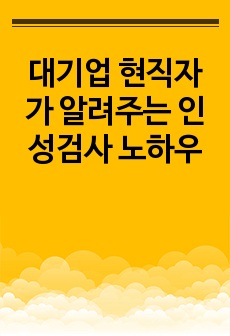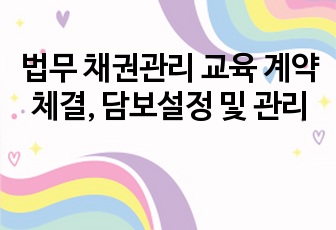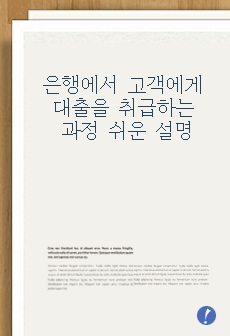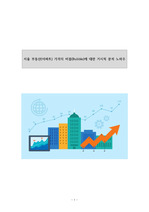소개글
A+ 맞은 과목의 자료입니다. 참고하시고 점수 잘 받으세요^^목차
I. 서론II. 기존 창의성 검사의 종류
III. 유아용 창의성 측정도구의 장단점들
IV. 향후 제작되는 한국의 유아창의성 검사에서 고려해야 할 변인들
IV. 결론 및 제언
본문내용
유아용 창의성 측정도구에 관한 고찰유아 창의성 측정도구들에 대한 고찰
최인수*
본 논문은 그 필요성이 점증하고 있는 한국 유아용 창의성 측정도구를 개발하기 위한 준비과정으로 먼저 기존의 유아용 창의성 측정도구들을 소개하고 각 도구들의 장단점을 논의하였다. 창의성에 대한 접근방법이 다양하기 때문에 그 방법에 기초한 도구도 서로 상이하나 크게 나누어서 인지ㆍ지각 검사, 성향검사, 창의적 산물검사의 3가지 부류로 나눌 수 있다. 이 세 가지 종류의 검사에 대한 비교 후에 유아를 대상으로 하는 검사에서 고려해야 할 변인을 살펴보았다. 이를 바탕으로 향후 제작될 유아용 창의성 검사는 첫째, 아동의 발달수준을 고려해야 할 것이고, 둘째, 재능을 보이는 영역별로 특화 되어야 하며, 셋째, 한국의 사회와 문화적 특수성을 고려하여야 하고, 마지막으로, 단일 차원의 검사보다는 다차원적인 각도에서 유아의 창의성을 측정하는 형태로 나아가야 할 것을 제안하였다.
I. 서론
국가전체가 지식정보사회를 향하여 무서운 속도로 변해가고 있다. 이 시대적 변화에 능동적으로 대처하기 위해서 창의성의 개발은 필수 불가결한 요소가 되었다. 이러한 국가적 관심사를 뒷받침하는 시책의 하나로 국회는 1999년도 말에 국가적 차원에서 창의적 영재를 양성하는 것을 주요 내용으로 한 「영재교육진흥법」을 통과시켰다. 이에 따라 영재교육을 위한 예산마련이 가능해지는 등 창의적 영재를 위한 교육이 크게 활기를 띨 것으로 보이며 또한 영재학교의 설립도 곧 가시화 될 것으로 보인다. `영재아동`을 어떻게 정의할 것인가에 대해서는 다양한 논란이 있다(Davis & Rimm, 1993). 그러나 현재에는 미국 교육부에서 내린 정의와 같이 종전의 지능만으로 구분하는 준거에서 벗어나서, 다양한 분야에서 재능을 가지고 높은 수행을 보이고 있는 아동들을 일컫는 개념으로 변화되고 있다(Marland, 1972). 영재연구학자 Renzulli(1986)는 영재란 보통이상의 능력, 창의성, 과제에 대한 집착력등 세 가지
참고 자료
김보선 (1999). TTCT에 대한 미국인과 한국인의 반응결과의 차이 연구. 성균관대학교 대학원 석사학위 논문.김성순 (2000, 예정). `은물교육`프로그램과 창의성과의 관계(가칭). 성균관대학교 교육대학원 석사학위 논문.
김온기 (2000, 예정). `유아의 창의적 사고력 증진 프로그램` 개발연구-과학활동을 중심으로(가칭). 연세대학교 아동학과 박사학위 논문.
김상윤 (1998). 유아의 창의성측정도구로서의 칠교판 검사 연구. 고신대학, 아동연구, 7, 1-11.
유연옥, 허미자. (1999). 그림 창의성 검사(TCT-DP)에 의한 유아의 창의성 발달. 미래유아교육학회지, 6(2), 157-183.
이은혜 (1995). 아동발달의 평가와 측정. 교문사
조성연 (1984). 창의성 검사의 타당화를 위한 일연구-Torrance 창의적 사고력 검사(TTCT)를 중심으로. 연세대학교 대학원 석사학위 청구논문.
전경원 (1999). 유아 종합 창의성 검사. 학지사: 서울.
조선일보(1999). 영재교육법, 12월 28일.
최인수 (1998a). 창의적 성취와 관련된 제 요인들: 창의적 연구의 최근 모델인 체계모델(Systems Model)을 중심으로. 미래유아교육학회지 5(2), 133-166.
최인수 (1998b). 창의성을 이해하기 위한 여섯 가지 질문. 한국심리학회지: 일반 17(1), 25-47
최인수 (2000). 창의성을 이해하기 위한 체계모델(Systems Model). 생활과학, 3, 441-464.
최인수 (2000). 유아 창의성 검사 도구 개발을 위한 교사들의 의견조사. 게재준비중
Alexander, P. A., Wilson, V. L.,, White, C.S., & Fuqua, J. D. (1987). Analogical reasoning in young children. Journal of Educational Psychology, 79, 4, 401-408.
Amabile, T. M.(1982). Children`s artistic creativity: Detrimental effects of competition in a field setting. Personality and Social Psychology Bulletin, 8, 573-378.
Amabile, T. M.(1983). The social psychology of creativity. New York: Springer-Verlag.
Arasteh, A. R., & Arasteh, J. B. (1976). Creativity and human development: An interpretive annotated bibliography. NYC: Wiley
Arieti, S. (1976). Creativity: The magic synthesis. New York: Basic Books.
Ball, O, E. & Torrance, E. P. (1980). Effectiveness of new materials developed for training the Streamlined Scoring of the TTCT, Figural A and B Forms. Journal of Creative Behavior, 14(3), 199-203.
Barron, F., & Harrington, D.M. (1981). Creativity, Intelligence, and Personality. Annual Review of Psychology, 32. 349-376.
Besemer, S. P. (1998). Creative product analysis matrix: Testing the model structure and a comparison among products-Three novel chairs. Creativity Research Journal, 11(4), 333-346.
Ceci, S. J. (1990). On intelligence . . . more or less: A bio-ecological treatise on intellectual development. Englewood Cliffes, N.J.: Prentice Hall.
Choe, I. S. (2000). Validation of Creativity Test for Preschool Children. Third International Outcomes Measure Conference. Chicago, IL, June 2000.
Costantino, G., Malgaly, R. & Rogler, L. H. (1986). Tell me a story. Los Angeles, CA: Western Psychological Services.
Cooper, E. (1991). A critique of six measures for assessing creativity. Journal of Creative Behavior. 25(3), 194-204.
Crain, W. C.(1980). Theoris of development. Englewood Cliffs, NJ: Prentice Hall.
Csikszentmihalyi, M.(1996). Creativity: Flow and the psychology of discovery and invention. New York: HarperCollins.
Damarin, F. (1985). Review of Creativity assssesment packet. The Ninth Mental Measurements Yearbook, 410-411. Lincoln, NB: University of Nebraska.
Davis, G. A. (1986). Creativity is forever. Dubuqe, LA: Kendall/Hunt.
Davis, G. A. and Rimm, S. B. (1982). Group inventory for finding interests(GIFFI) I and II: Instruments for identifying creative potential inthe juior and senior high school. Journal of Creative Behavior, 16, 50-57.
Davis, G. A. and Rimm, S. B. (1994). Education of the gifted and talented(3rd Ed.). Needhan Heights, MA: Simon & Schuster.
Domino, G., (1980). Chinese tangrams as a technique to assess creativity. Journal of Creative Behavior, 14, 204-213.
Feldman, D. H. (1980). Beyond universals in cognitive development. Norwood, N.J.: Ablex.
Finke, R. A., Ward, T. B., & Smith, S. M.(1992). Creative cognition. Cambridge, MA: MIT Press.
Fodor, J. (1983). Modularity of mind. Cambridge, Mass.: MIT bradford Press.
Frensch, P. A., & Sternberg, R. J.(1989). Expertise and intelligent thinking: When is it worse to know better? In R.J. Sternberg(Ed.), Advances in the psychology of human intelligence(Vol. 5, pp. 157-188). Hillsdale, NJ: Erlbaum.
Gardner, H. (1983). Frames of mind: The theory of multiple intelligences. New York: Basic Books.
Gardner, H. (1993a). Multiple intelligences. New York: Basic Books.
Gardner, H. (1993b). Creating Minds. New York: Basic Books.
Gove, P. B (Ed.)(1993) Webster`s third new international dictionary Springfield, MA: Merriam-Webster
Gough, H. G. (1979). A creative personality scale for the adjective check list. Journal of Personality and Social Psychology, 37(8), 1398-1405.
Gough, H. G., & Heilbrun, A. B.(1983). The adjective check list manual. Palo Alto, CA: Consulting Psychologists Press.
Grant, E. A., & Berg, D. A. (1980). Wisconsin card sorting test. Odessa, FL: Psychological Assessment Resources.
Gruber, H. E.(1982). Darwin on man.(2nd Ed.) Chicago: University of Chicago Press.
Guilford, J. P.(1950). Creativity. American Psychologist, 14, 205-208.
Guilford, J. P.(1956). Structure of intellect. Psychological Bulletin, 53, 267-293.
Guilford, J. P.(1986). Creative talents: Their nature, uses and development. Buffalo, NY: Bearly Limited.
Harms, T., & Clifford, R. M. (1998). Early childhood envirioment rating scale. Winston,
VT: Teacher College Press.
Hennessey, B. A., & Amabile, T. M.(1988). The role of environment in creativity. In R. J. Sternberg (Ed.), The nature of creativity(pp.11-38). Cambridge: MA: Cambridge University Press.
Hennessey, B. A. & Amabile, T. M. (1999). Consensual assessment. In M. A. Runco. & S. R. Pritzker. (Eds.). Encyclopedia of crativity, 347-360 Oval Road, London: Academic Press.
Holtsman, W. H. (1982). Divergent thinking as a function of the degree of bilingualism of Mexican-American and Anglo fourth-grade students. ERIC Document No ED216827.
Jellen, H. , & Urban, K. (1986). The TCP-DP: An instrument tha tcan be applied to most age and ability groups. Crative Child and Adult Quarterly, 3, 138-155.
Khatena, J. & Torrance, E. P. (1976). Khatena-Torrance creative perception inventory. Chicago, IL: Stoelting.
Khatena, J. & Torrance, E. P.(1998). Khatena-Torrance creative perception inventory. Bensenville, IL: Scholastic Testing Service.
Kratzmeier, H. (1977). Heidelberger Intelligentztes (HIT 1-2). Weinheim: Beltz.
Lowenfeld, V. (1962). Creativity: Education`s stepchild. In S. J. Parnes & H. F. Harding (Eds.). A Source book of creative thinking, 10-17. New York: Scribner.
Lubart, T. I.(1994) Creativity. In R. J. Sternberg(Ed.) Thinking and problem solving(pp.289-332). San Diego, CA: Academic Press.
Marland, S. P., Jr. (1972). Education of the gifted and talented, Volumn 1. Report to the Congress of the United States by the U.S. Commssioner of Education. Washington, DC: U.S. Government Printing Office.
Meeker, M. (1969). The structure of intellect: Its interpretation and uses, 3-26, 86-89. Columbus, OH: Charles E. Merrill.
Mednick, S. A.(1962). The associative basis of the creative process. Psychological Review, 69, 220-232.
Moran, J. D., III, Sawuers, J.K., Fu, V. R., & Milgram, R. M. (1988). Measuring creativity in preschool children. Journal of Creative Behavior, 22, 254-263.
Ochse, R.(1990). Before the gates of exellence: The determinants of creative genius. New York: Cambridge University Press.
Puccio, J. Gerard., Murdock, C. Mary. (1999). Creativity assessment: Reading and resources. Buffalo, NY: CEF Press.
Renzulli, J. S. (1986). The three-ring conception of giftedness: A developmental model for creative productivity. In R. J. Sternberg and J. E. Davidson (Eds.). Conceptions of Giftedness. Cambridge, MA: Cambridge University Press.
Rimm, S. B. (1982). PRIDE: Preschool interest descriptor. Watertown, WI: Educational Assessment Service.
Rimm, S. B. and Davis, G. A. (1976). GIFT: An Instrument for the identification of creativity. Journal of Creative Behavior, 10, 178-182.
Runco, M. A., Jonson, S., & Bear, P. (1993). Parents` and teachers` implicit theries of chidren`s creativty. Child Study Journal, 23, 91-113.
Sikka, A. (1992). Responses of African-American students on the Torrance Tests of Creative Thinking(Figural). ERIC Document No ED353314.
Sternberg, R. J.(1985). Implicit theories of intelligence, creativity, and wisdom. Journal of Persoanlity and Social Psychology, 49(3), 607-627.
Torrance E. P. (1966). The Torrance Tests of Creative Thinking: Technical-norms manual (research ed.) Princeton, NJ: Personnel Press.
Torrance E. P.(1981). Thinking creatively in action and movement. Bensenville, IL: Schlastic Testing Service.
Torrance, E. P., Khatena, J. & Cunnington, B. F. (1973). Thinking creatively with sounds and words. Bensenville, IL: Scholastic Testig Service.
Torrance, E. P., Ball, O. E., & Safter, H. T. (1998). Torrance tests of creative thinking streamlined scoring guide figural A and B. Bensonville, IL: STS.
Vernon, P. E. (1985) Review of Khatena-Torrance Creative Perception Inventory: The Ninth Meantal Measurements Yearbook, 788-789. Lincoln, NB: University of Nebraska
Wagner, E. E. (1959). Hand test. Los Angeles, CA: Western Psychological Services.
Wallach. M. A., & Kogan, N. (1965). Modes of thinking in young children: A study of the creativity-intelligence distinction. NYC: Holt, Rinehart, & Winston.
Ward, T. B., Finke, R. A., & Smith. (1995). Creativity and the mind: Discovering the genius within. New York: Plenum Press.
Williams, F. (1980). Creativity assessment packet. Buffalo, NY: DOK.
ABSTRACT
Early Childhood Creative Measurement: reviews and suggestion
Choe, In-Soo


















![[논문]유아창의성측정도구](/doc/cover/11247297/%EB%85%BC%EB%AC%B8_%EC%9C%A0%EC%95%84%EC%B0%BD%EC%9D%98%EC%84%B1%EC%B8%A1%EC%A0%95%EB%8F%84%EA%B5%AC.jpg)










